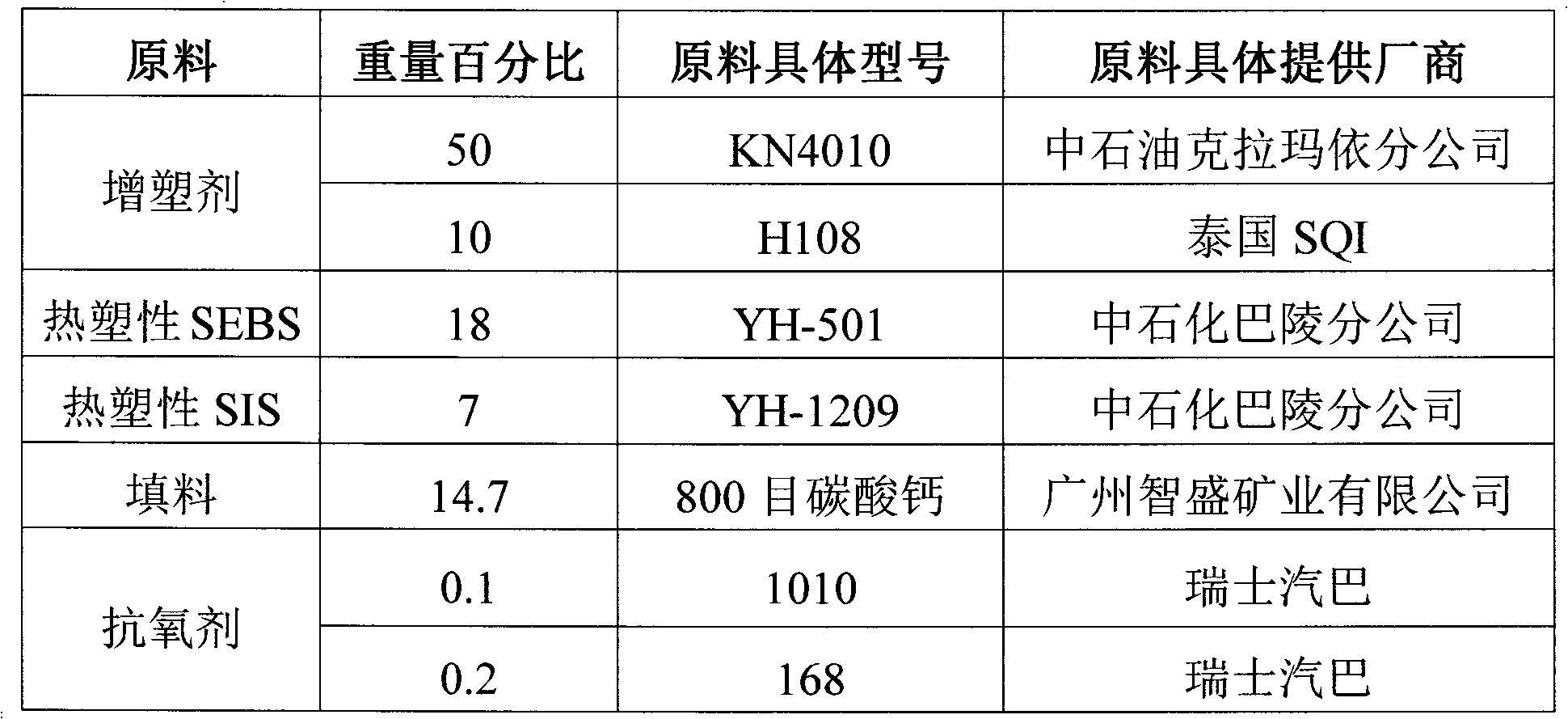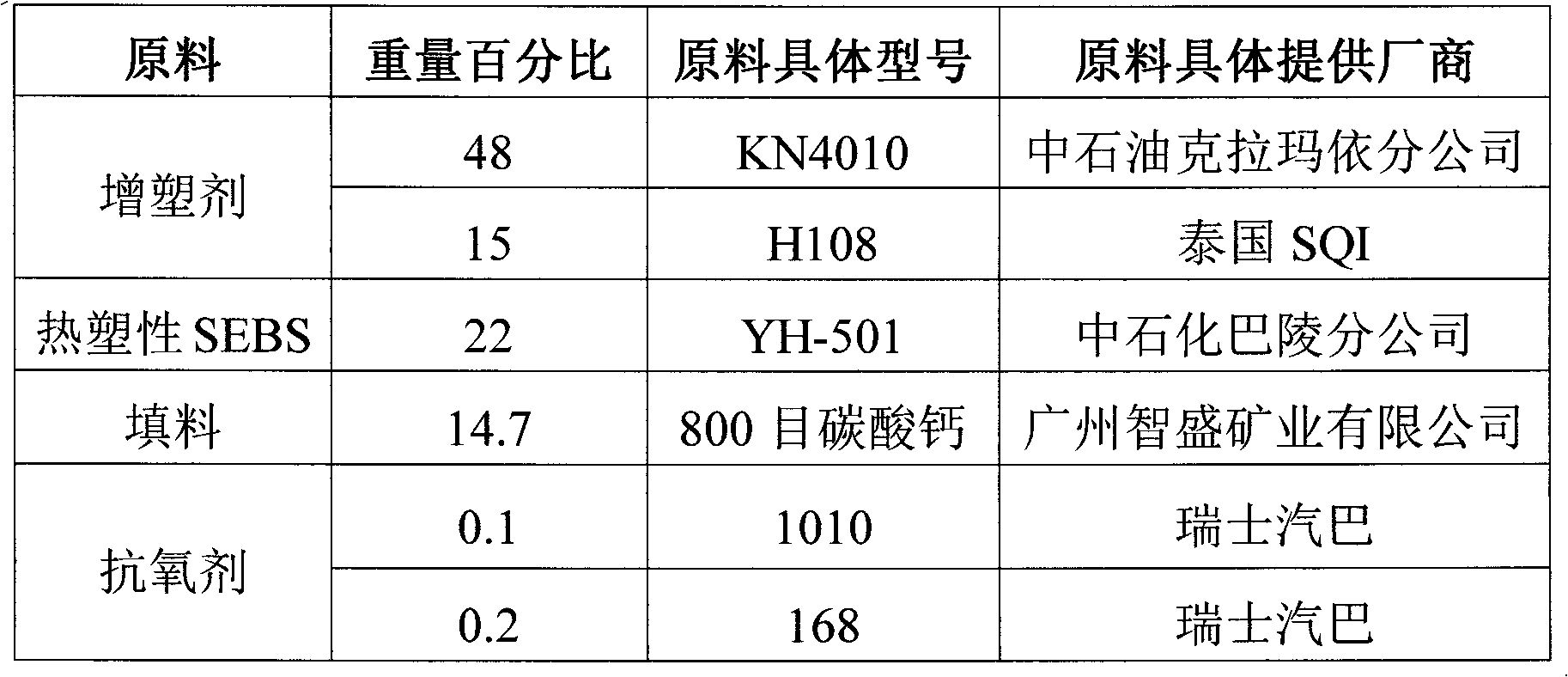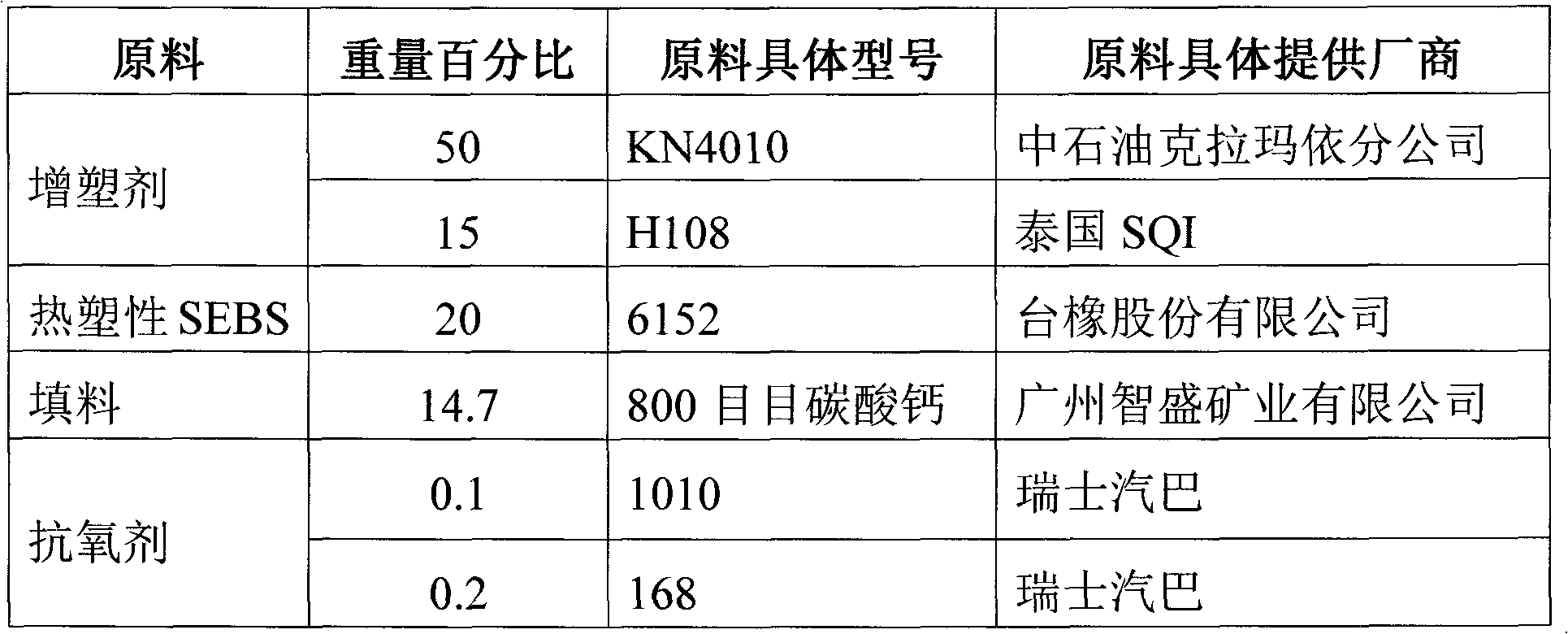Method for preparing hot melt adhesive for damping interval of ceramic tile
A hot-melt adhesive and ceramic tile technology, applied in adhesives, adhesive additives, non-polymer adhesive additives, etc., can solve the problems of low automation, white pollution, and difficult degradation, and achieve easy peeling and curing Fast, easy glue application
- Summary
- Abstract
- Description
- Claims
- Application Information
AI Technical Summary
Problems solved by technology
Method used
Image
Examples
example 1
[0024] Prepare following hot melt adhesive according to the method of the present invention:
[0025]
[0026] The characteristics of the hot melt adhesive obtained in this example: the melt viscosity is 3800cp at 160°C, and the Shore hardness is 82 when the colloid is 25°C; the spacer tiles are peeled off after 72 hours of heavy pressure, and the peeling force is 13.3N, which is relatively laborious. Watch There are a few traces on the surface of the tiles, but no oil marks.
example 2
[0028] Prepare following hot melt adhesive according to the method of the present invention:
[0029]
[0030] The characteristics of the hot melt adhesive obtained in this example: the melt viscosity is 2700cp at 160°C, and the Shore hardness is 89 when the colloid is 25°C; the spacer tiles are peeled off after 72 hours of heavy pressure, and the peeling force is 9.5N, which still requires a lot of force , watch the surface of the tiles, no traces, no oil marks.
example 3
[0032] Prepare following hot melt adhesive according to the method of the present invention:
[0033]
[0034] The characteristics of the hot melt adhesive obtained in this example: the melt viscosity is 2850cp at 160°C, and the Shore hardness is 86 when the colloid is at 25°C; the spacer tiles are peeled off after 72 hours of heavy pressure, and the peeling force is 8.4N, which still requires a lot of force , watch the surface of the tiles, no traces, no oil marks.
PUM
| Property | Measurement | Unit |
|---|---|---|
| Shore hardness | aaaaa | aaaaa |
| Shore hardness | aaaaa | aaaaa |
| Shore hardness | aaaaa | aaaaa |
Abstract
Description
Claims
Application Information
 Login to View More
Login to View More - R&D
- Intellectual Property
- Life Sciences
- Materials
- Tech Scout
- Unparalleled Data Quality
- Higher Quality Content
- 60% Fewer Hallucinations
Browse by: Latest US Patents, China's latest patents, Technical Efficacy Thesaurus, Application Domain, Technology Topic, Popular Technical Reports.
© 2025 PatSnap. All rights reserved.Legal|Privacy policy|Modern Slavery Act Transparency Statement|Sitemap|About US| Contact US: help@patsnap.com



